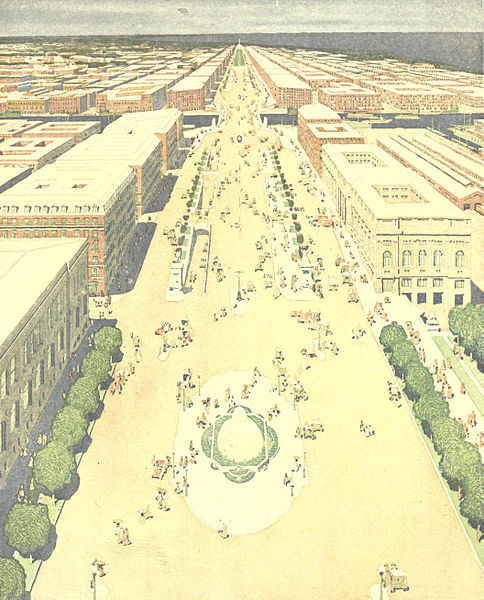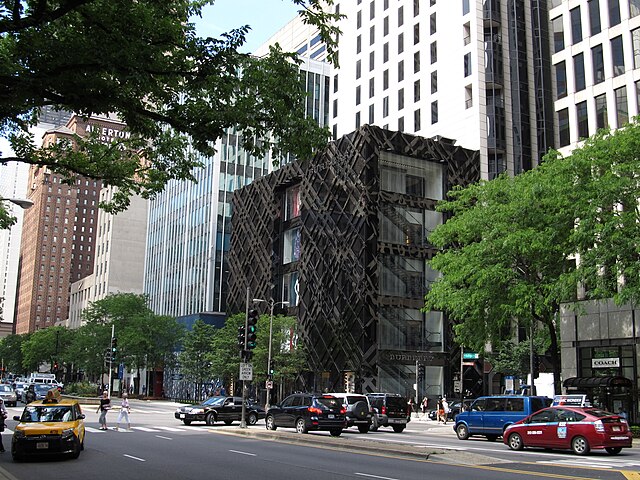The DuSable Bridge is a bascule bridge that carries Michigan Avenue across the main stem of the Chicago River in downtown Chicago, Illinois, United States. The bridge was proposed in the early 20th century as part of a plan to link Grant Park (downtown) and Lincoln Park (uptown) with a grand boulevard. Construction of the bridge started in 1918, it opened to traffic in 1920, and decorative work was completed in 1928. The bridge provides passage for vehicles and pedestrians on two levels. An example of a fixed trunnion bascule bridge, it may be raised to allow tall ships and boats to pass underneath. The bridge is included in the Michigan–Wacker Historic District and has been designated as a Chicago Landmark.
DuSable (Michigan Avenue) Bridge viewed from the west
Michigan Boulevard and bridge, as proposed in Burnham & Bennett's 1909 Plan of Chicago, looking north from Grant Park
The Michigan Avenue Bridge in the 21st century is raised twice weekly in the spring and fall to allow tall craft to winter near the river and have summer moorings on Lake Michigan harbors. In the 19th century and into much the 20th century, such bridge raising or swiveling also facilitated commercial traffic through much of the year
Entrance to the Bridgehouse Museum
Michigan Avenue (Chicago)
Michigan Avenue is a north-south street in Chicago that runs at 100 east on the Chicago grid. The northern end of the street is at Lake Shore Drive on the shore of Lake Michigan in the Gold Coast Historic District. The street's southern terminus is at Sibley Boulevard in the southern suburb of Dolton, but like many other Chicago streets, it exists in several disjointed segments.
Michigan Avenue in the Streeterville neighborhood of Chicago
A 1921 edition of Collier's magazine featuring Michigan Avenue from Grant Park
Michigan Avenue under renovation in the 1950s with the Art Institute of Chicago visible in the background
Historic Michigan Boulevard District in 1911








